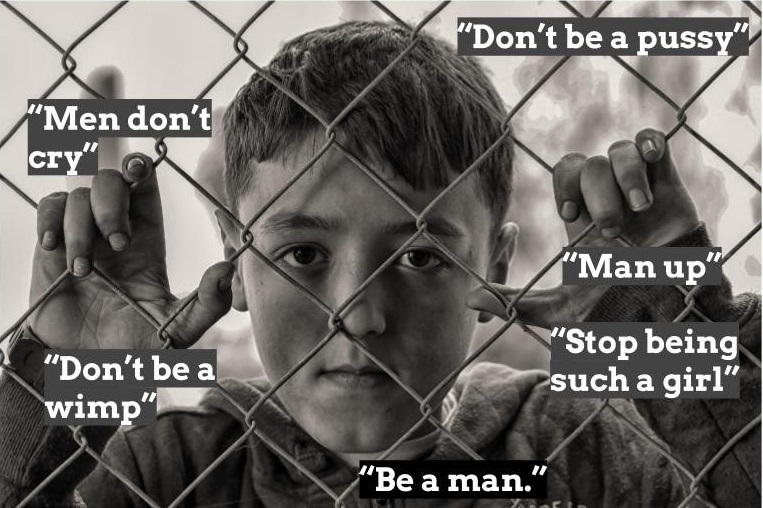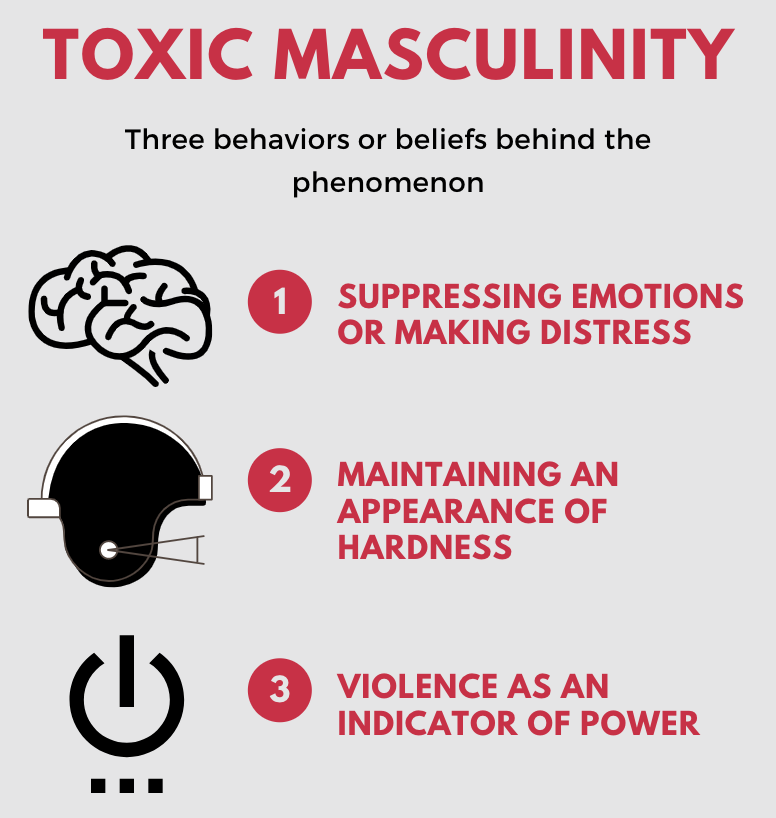“Boys will be boys.”
“Men don’t cry.”
“Arey, just be a man.”
“Ladke ho, Ladke ki tarah raho.”
These are all statements which have at some point in our lives been addressed to us or we have heard being addressed to someone around us. But are these statements mere colloquial references or do they have a deeper more intrinsic bearing on how we perceive gender identities to be?

Origin
In gender studies, hegemonic masculinity is part of Prof. R. W. Connell’s gender order theory, which has recognized multiple masculinities that vary across time, culture and the individual. The term hegemonic refers to dominance or ruling and hence hegemonic masculinity is defined as a practice that legitimizes men’s dominant position in society and justifies the subordination of the common male population and women, and other marginalized ways of being a man. The theory in concept is an attempt to explain how and why men maintain dominant social roles over women, and other gender identities, which are perceived as ‘feminine’ in a given society.

It is an early observation where Connell argues that an important feature of hegemonic masculinity is the use of ‘toxic’ practices such as physical violence, which may serve to reinforce men’s dominance over women in various societies. Such acts are comparable to various members of the animal kingdom whereunder it is common for males of the species to indulge in violent fights to express dominance so as to attract a mate.

A similar trend seems to have followed through in the human society however it is expressed by various other behavioral patterns which are expected to make someone a ‘man’ which include displaying bravery, an inverted triangular body structure, strength and in some orthodox societies is characterized by finer behavioral and physical traits like facial hair, voice and general hand and body movements.
Some scholars have used the term toxic masculinity to refer to such stereotypically masculine gender roles that restrict the kinds of emotions that can be expressed by boys and men, including social expectations that men seek to be dominant; the “alpha male“.
Bearing on the lives of fellow cis men
Even on a rather primitive survival-oriented level ‘toxic masculinity’ adversely affects cis men. Toxic masculinity as understood today explains a pattern of expectations which are expected of a man. These expectations becoming the social norm have casted upon the newer generations of boys immense pressure to fulfill the idealistic image of a man.
.png)
With such an expectation that governs the behavior of men in every step of life, it mainly has seen to affect their, social behavior, their professional choices and their interpersonal behavior.
The most evident manifestation of such effect is depicted clearly by the overcrowding of men in STEM fields since they in the early 20th century popularly came to be known as male oriented jobs. This effectively curbs men from practicing professions which have more feminine associations like fashion designing, art forms, and even classical dancing as indulging in such professions often invites ridicule from the society.
It is necessary to emphasize that out of 803,900 suicides world-wide in 2012, 506,487 (65%) were men, which equates to a rate of 15 per 100,000 for men and 8 per 100,000 for women. The most updated data from 2016 archives also paint a similar picture. Although such a high suicide rate cannot directly be attributed to societal pressure, but a significant part of certainly leans towards family-based pressures, depression etc.
Bearing on the lives of cis women, transgenders and others
Toxic masculinity has a more than significant bearing on the lives of cis women, transgenders and others (hereinafter collectively Them, They and Their) wherein considering the hegemonic definition of toxic masculinity, it refers to exercising dominance over Them, i.e. the ‘weaker’ genders which are referred to as more feminine. Although appalling the prevalence of such a mindset is not uncommon even in the 21st century, wherein defined gender roles have in terms obligated Them to carry out house chores and raise children. They are often than not faced by physical, emotional and sexual exploitation. They are not permitted to enter into various STEM fields and are expected to adopt various job profiles which are identified as ‘feminine’.
Furthermore, this culture of toxic masculinity, leading to toxic dominance has led to in a sense a lust for superiority which is the root cause for various physical or sexual exploitation related concepts in the present time. It is this insatiable need coupled with the supposed dispensable consent has led to increased atrocities against them.

Conclusion
Although, the rather unfortunate social phenomenon of toxic masculinity cannot be explained in one article, it is an implied takeaway that toxic masculinity, conceptually and practically causes detriment to the life and livelihood of every human the exception of the ‘toxically masculine men’ themselves and others who propagates a similar ideology.
It is necessary to understand that this trend of toxic masculinity was at a point in history widely accepted by everyone including Them considering its popularization was heavily dependent upon their acceptance. However, it has in the past century devolved into a more rudimentary yet toxic form. It further pertinent to note, lastly, that the fight is now concentrated against a common evil, that is this toxic mentality. It is upto us, i.e. the progressive society now to help abrade the bearing and the existence of this mentality.


One thought on “Toxic Masculinity”